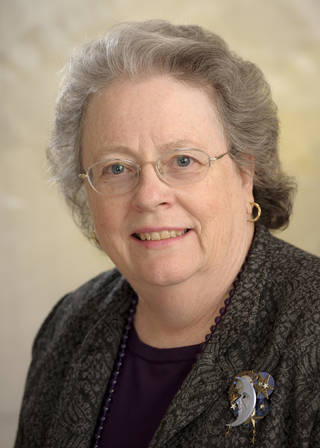Extraterrestrial: Imagining Other Worlds
ET is coming to your living room in "Extraterrestrial," andno one is being abducted. Over the past several months, a top-notch group ofAmerican and British scientists teamed up with Blue Wave Productions, Ltd. (forthe National Geographic) to imagine what ET is like on other worlds. It's allbased upon our scientific understanding of life, stars and planetary systems.When filmed, Dr. Michael Meyer was NASA's astrobiology program scientist, andnow serves as NASA Headquarters Mars Program Scientist; Dr. Seth Shostak is a senior astronomer here at the SETI Institute;Dr. Chris McKay is a leading Mars researcher at NASA Ames Research Center, Dr. Laurance Doyle conducts research on animal communication,and planetary systems around binary stars at SETI Institute and is the leadscientists at PlanetQuest, Inc. a new non-profit thatwill engage the public in finding extrasolar planets.Dr. Simon Conway Morris is a world-leader in evolutionary biology at Cambridge Universityin England....andthe list goes on. These are serious and accomplished scientists--legitimateguys applying everything they know about stars, planetary systems, planetaryevolution, and most especially, the evolution of life, to speculate on whatlife might be like on other worlds.
In a word, the outcome is WILD!
It'sscience meets science fiction. Scientists are often accused of being tooconservative in their predictions about the future, but in this case, theseguys expand our understanding of what life might be like on alien worlds. It'snot just another simple variation on bilaterally symmetrical humanoids. Thequestions these scientists ask about life on alien worlds are at the core ofthe cross-disciplinary science astrobiology, which seeks to understand lifehere on Earth and to seek life elsewhere in the universe.
"Extraterrestrial" explores worlds that would have beenpromptly discarded by planetary scientists as unsuitable for life a decade ago.Before the discovery of gas giants orbiting their stars in just a few days,astronomers had concentrated on looking for planetary systems like our own. Systems that featured nice middle-sized, middle-aged stars like theSun. The cooler stars like red dwarfs and the double stars that aboutcomprise half the stars in the galaxy were thought unsuitable for stableplanetary systems. Astronomers are rethinking those judgements.
It's all changed with the discovery of more than 150 planetsin orbit about nearby stars. Most of these systems are not anything like ours.Solar system theorists went back to square one, and are busy rebuilding theirmodels to explain the great diversity of planetary systems observed. Newtheories of planetary system formation and evolution are in the works. But, I'mgetting too serious. "Extraterrestrial" is fun television taking on seriousscience.
"Extraterrestrial" considers life in wild places. First,there's Aurelia, a hot-and cold world that is tidally locked to a red-dwarf sunthat forever shines on one side of the planet. The dark side is shrouded inperpetual ice. Such a planet would be a challenging place to live, butscientists think that extraterrestrial life may actually exist in the comfortzone between all sun and all ice--not too hot, not too cold--on such planets.Aurelia's creatures are based upon our knowledge of life, natural selection,stars and planets. Yep, there's predators and prey. I won't spoil the fun andfantasy by describing them, except to say that they have nothing in common withthe "grays" that populate modern UFO myths.
"Blue Moon" is the second ET stop over, and it's moreamazing. It orbits a giant ringed world that reminds me of Saturn, and in thedistance its twin suns shine brightly. Consider the sorts of creatures couldfly in a much denser atmosphere. Imagine an ocean of air, and you're startingto get the picture. Again, I won't spoil the fun.
Breaking space news, the latest updates on rocket launches, skywatching events and more!
As humans, we're on the leading edge of scientific researchand exploration that will discover many more planets and planetary systems overthe next few years. Within the decade, the KeplerDiscovery Mission should find hundreds of Earth-size planets in habitable zonesby observing them as they transit across the faces of their suns. Largermissions are in planning-- the Space InterferometryMission (SIM), the Terrestrial Planet Finders (TPF-I and TPF-C), and the JamesWebb Space Telescope (JWST)--to seek nearby worlds and analyze theiratmospheres for indications of life. We already know that planetsare plentiful, but is life? We may know the answer in our lifetimes.
"Extraterrestrial"offers an imaginative trip into the future. Don't miss your chance to visitalien worlds from the comfort of your living room couch. "Extraterrestrial" ison the National Geographic Channel Monday, May 30 and Thursday, June 2. Check your local listings, or go to"Extraterrestrial" on the National Geographic web site: http://www.nationalgeographic.com/channel/extraterrestrial/

Edna DeVore is a science and astronomy educator and the former Director of Education and Public Outreach for the SETI Institute. She earned an undergraduate degree from the University of Pacific followed by a master's degree in instructional technology from San Jose State and a master's in astronomy from the University of Arizona. In 1992, Edna joined the SETI Institute, where she wrote features on space exploration, astrobiology and more, some of which appeared on Space.com. She was among the first principal investigators to propose projects to NASA's Office of Space Science and receive funding for educational programs. Edna went on to work on education and public outreach for NASA's Kepler space telescope and SOFIA flying telescope missions. Edna received numerous awards during her tenure at SETI, including NASA Honor Awards for her work on Kepler and SOFIA, and Aerospace Awareness Award for Women in Aerospace in 2005. Edna retired in 2013.
